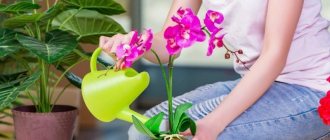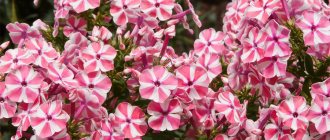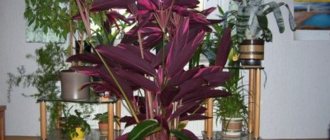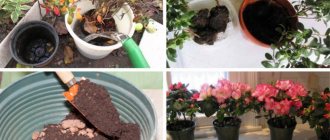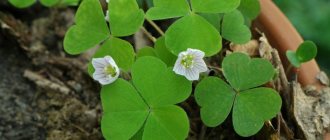Each of us tries to make our home more comfortable and cozy. Flowers add undeniable comfort to any apartment or house, and it is also useful, because indoor plants perform the function of purifying the air. Archaeological science, based on pollen found in caves, has proven that even in the Stone Age, people decorated their homes with flowers. Today, indoor floriculture is a separate science, and from all the variety of house plants, we present the most beautiful indoor flowers.
18 most beautiful types of indoor flowers:
1
Clivia
The beautiful evergreen plant is named after Duchess Charlotte Clive, who was governess to the future Queen Victoria of Great Britain.
This flower arrived in Europe from South Africa, easily took root in northern latitudes and became a favorite of most gardeners.
An unpretentious plant will decorate any home or office space, but you must try not to move the pot and water it once a week.
2
How to care for chrysanthemum
Start caring for cut chrysanthemums by cutting the stem with a knife along an oblique line. Remove the lower leaves.
Stagnation of water should not be allowed. Change it at least once every 2 days.
When changing the water, add one of these products:
- A specialized drug that is sold in florist shops. For example, "Bud".
- Aspirin. For 2 liters of water, 1 tablet is enough.
- Salt. 2 teaspoons per 2 liters of water.
- Granulated sugar. 2 tablespoons per 2 liters of water.
Chrysanthemums love cool rooms with temperatures up to 20 degrees Celsius and do not tolerate direct sunlight.
Crassula
The round leaves of this plant look like coins, which is why Crassula is often called “money tree” or “crassula” among gardeners.
When it blooms, it is covered with small white flowers, sometimes red, and very, very rarely the flowers can be blue.
One of the most unpretentious room dwellers. Even a leaf that falls to the ground can sprout into a separate plant.
3
All beauty is in greenery.
I'll start with my favorites - aspargus.
I have three varieties of them so far. One of them was grown from seeds, and I bought Meyer’s asparagus seeds, but Sprenger’s ended up growing. Therefore, for now, all that remains in my dreams is to get this beautiful Meyer asparagus. Asparagus do not like direct sunlight and need spraying. I replant them every spring. A week ago, while replanting the largest of them, I spent an hour trying to get the plant out of the pot. It turned out that the roots had grown so much that the pot began to burst and was about to crack. And their roots are powerful, in the form of tubers. And the plant itself, although it seems fluffy, is actually very prickly. All hands were covered in deep scratches and splinters. Another openwork favorite of mine is the adiantum. Perhaps the most capricious plant in my collection. Before you have time to water it, it dries out. If you overwater it, it will wither. Doesn't like direct sun either. In general, with any discomfort it begins to die. This is also Venus hair, but not store-bought, but taken from friends. It's more durable. This is a stand for our furbabies. At the very top is asparagus, recently separated during transplantation. A member of the nettle family is soleirolia. This green ball grows quickly, so it needs to be replanted annually. After a recent transplant, I got two full-fledged plants. Saltirolia loves humidity and I really like to mist it several times every day. Another lover of moisture is fern. I spray it in the morning and evening. Fern loves light soil. It spends the summer outside, growing even stronger there. The beautiful selaginella looks like a fern, but is a member of the club mosses, so it is also a lover of water. The soil in the pot should always be moist, it is advisable to put wet expanded clay in the tray and spray it daily. Now I will introduce you to my palm trees. This is Hamedorea elegans, or in other words Hamedorea graceful. Indeed, a very beautiful palm tree. Constantly throws out inflorescences similar to mimosa. It is loved by all kinds of pests, spider mites and scale insects. Our large, almost meter-long palm tree died from them because we did not recognize the pests in time and could not get rid of them. This is a new generation of palm trees already growing up. Hamedorea loves spraying. You need to wipe the leaves from time to time, as they like to collect dust. This palm has an interesting history. We picked up the seed in the south under a huge spreading palm tree. At the same time, we bought several more seeds of another palm tree there. The ones we bought didn’t even sprout, but this one, just selected, sprang up and is growing successfully to this day. The palm tree is already six years old, but I still can’t find its name. Most likely it is a date palm. Howea is our new palm tree. He only lives with us for a couple of months. Phytonia - under natural conditions it grows in humid places and usually under the cover of other plants, so it loves high humidity and partial shade. It does not belong on a sunny windowsill. It is necessary to constantly keep the soil and leaves moist. They look very beautiful in combination of different colors with each other. Croton (Codium) always amazes me with the beauty of its leaves. The plant does not like stagnation of water in the pot and frequent replanting, as there is a possibility of damaging its roots. Lighting is very important for croton, since all the beauty and variegation of its leaves depends on it. If there is not enough light, the leaves will simply be green. Loves being sprayed. This is another little croton. Begonia so far only pleases us with its leaves; it doesn’t want to show off its beautiful flowers. The beautiful Schefflera needs daily spraying with water and does not like bright sunny colors. Periodically you need to wipe the leaves from dust. This is another shefflera - bianca. She is still very small, but already very beautiful. Ficus benjamina is afraid of drafts and climate change. It may drop its leaves immediately. We have two types of them. Propagates well from cuttings. Loves light, but not direct sunlight. In winter, when the indoor air is dry, it is useful to spray the plant or give it a shower. And this is also a dwarf ficus - a creeping shrub or vine. It grows very well and pleases with its small two-color leaves. Caring for it is the same. There is a money tree or crassula in almost every home, and not only because all people have a lot of money. This is a real mini tree for your home, with beautiful fleshy shiny leaves. Loves a brightly lit place. In summer it is good to take it outside. Crassula blooms very beautifully, but very rarely. We have a couple of cacti. One of them is already many years old and is almost human-sized. Another compact one grows on the windowsill. Since my husband loves lemons, we have a lot of them at home. The oldest of them is already more than fifteen years old, it was planted from a seed, but we still have not seen lemons from it, despite its advanced age. Another lemon was bought in a store and, according to the sellers, should have produced fruit within a year. Three years have passed, but there are no lemons. But lemons were given by calamondin, which at the beginning gave tangerines. We bought this tree covered with tangerines. It made us happy for exactly a month, after which all the leaves suddenly fell off and one bare tree remained. It was a pity and a little too lazy to throw it away, although it showed no signs of life at all. About a month later, sprouts began to appear below the grafting, then many branches grew, although the upper part was completely dry. Then the tree began to bloom profusely. We were glad that our calamondin came to life. But then, when the fruits began to set and began to increase in volume, we realized that these were not tangerines, but most likely lemons. After searching the entire Internet, I found information that calamondins are grafted onto Meyer lemons. Based on the descriptions of the flowers and leaves, we were convinced that it was him. And exactly nine months later the fruits were ripe and we tried tea with them. These were such fragrant and incredibly tasty fruits! Lemon with tangerine flavor. From the peculiarities of its growth, we noticed that in winter the lemon drops all its leaves and sits with one single leaf. But in the spring, new shoots appear again and the lemon becomes the same. This is a plant with the most interesting history of rebirth. The other day the lemon put out its buds again. We'll wait for the lemons. In conclusion, I wanted to briefly summarize the care tips. Almost all the plants described here love spraying and high humidity. That's why I go around all the plants every day with a spray bottle. In addition, we often turn on a humidifier, which is useful not only for plants, but for people, when in winter the air in the room is very dry, dust flies and everything becomes electrified. Periodically, I add fertilizer to the soil through watering. Each type of plant has its own fertilizer. Another very good fertilizer is water from the aquarium, which we change every week. In order not to just throw it away, we water indoor plants with them, and in the summer also garden plants. We could also talk about the plants in the aquarium, but during the year of its existence, all the plants were eaten by voracious fish and snails.
Lithops
Photo credit: Dornenwolf / flicr
Translated from ancient Greek, the name of the plant translates as “stone appearance,” perhaps because it comes from the rocky and sandy deserts of Namibia and Botswana.
That is why Lithops has learned to retain moisture and easily tolerate heat and arid climates.
The flowers of the desert dweller who migrated to apartments are white or yellow; very rarely there are varieties with orange petals.
4
Croton
This species, growing in tropical and subtropical zones, has long become popular among flower growers around the world.
Its bright leaves will add variety and uniqueness to your home, or will become a real decoration for your office. Due to its shape it has become very popular among amateur gardeners.
The plant is easy to care for, and some of its species grow up to 80 centimeters in height.
5
Chrysalidocarpus
This decorative palm tree has gained popularity among plant growers due to its aesthetics and ease of care. Chrysolidocarpus can decorate absolutely any interior; it promotes a creative atmosphere in the house and brings a feeling of ease and comfort. No wonder this reed palm is often used to decorate offices. A small warning - cats love to chew chrysolidocarpus leaves, so try to make sure that they cannot get to it.
Bromeliad
They named the indoor flower and the entire genus in honor of the Swedish biologist Bromelius. This tropical beauty is a distant relative of the pineapple.
Their leaves are lancet-shaped, they are collected in a kind of rosette from which the peduncle grows. Bromeliads require watering only once a week, but bromeliads should be placed in places that receive sunlight.
Flowering lasts from 3 weeks to several months, delighting the owners and guests of the house.
6
How to care for a cactus?
Cacti require a lot of sunlight. Place them on the south or east sides.
Winter is a dormant period for most cacti. Therefore, during the cold season, move it to a cool room and place it in the shade. In summer, take the plant out onto the balcony.
For watering, use water at room temperature. In summer and spring, water the cactus once every 2 days. In autumn, once every 5 days. And in winter, once every 1.5 weeks.
The warmer the room, the more often and more abundantly the cactus needs to be watered.
Geranium
This beautiful indoor plant also has bactericidal properties, so it will not only decorate the room, but will also be useful.
In order for geraniums to bloom constantly, it is necessary to pick off the already fading flowers.
The plant is unpretentious and does not require spraying or frequent watering. Because of its beauty and originality, geranium is one of the most popular inhabitants of apartments and offices.
7
Ficus
This is probably the most popular plant in indoor culture, but that doesn’t make it any less attractive. Ficus is known for its beneficial properties - it absorbs toxins from the air much better than other indoor plants, so buying this flower is not only an investment in interior decoration, but also a manifestation of concern for your health. If you place the ficus in a well-lit place and spray it regularly, this plant will delight you for a very long time.
Alocasia
The exotic queen of the tropics has just begun to win the hearts of sophisticated flower growers. Unusual, original shaped alocasia leaves will decorate any room.
In addition, it is unpretentious and does not require special care. Interestingly, different species have different numbers of leaves, but during flowering many plants have only one leaf.
In nature, some species grow up to 2 meters in height, but domestic relatives are from 20 to 40 centimeters.
8
How to care for lilies?
Lily can stay at home for up to 2 weeks. Prepare a vase for her with settled water and add an antiseptic. An aspirin tablet, activated carbon or a few crystals of potassium permanganate will do. This will prevent the flower from rotting.
Change the water in the vase daily, rinse the stems and leaves under running water.
Remove the stamens from blooming flowers, then they will bloom much longer. A bouquet of lilies will be best preserved indoors at room temperature, away from sunlight.
Spathiphyllum
According to legend, this beautiful home flower helps girls meet their betrothed and find feminine happiness.
But with such abilities, it requires special attention to itself, and one cannot say that these are unpretentious indoor flowers. It does not like drafts, but it is better to water it using the cycle method with settled water.
During its flowering period it requires more moisture, but the sun is not so important for it, so it can also grow on windows facing north.
9
How to care for indoor flowers?
Basic care for indoor plants includes 5 steps:
- Watering. Use a watering can with a long spout. When watering, it should touch the edge of the pot. Pre-settle the water for at least 3 hours.
- Spraying. To create a warm shower, prepare a spray bottle and settled water.
- Trimming stems and removing dust from leaves. Wipe off dust from large leaves with a damp sponge, and from small and pubescent leaves with a brush. Trim stems with garden shears.
- Feeding . Choose liquid or dry fertilizers. The former are more often used for feeding indoor plants, since they provide the fastest feeding of the root system.
- Transfer. Replant a flower only if it is sick or has grown out of the pot. Plants do not like frequent replanting.
Floristry courses
online
Floristry courses
in Moscow
Floristry courses
In Petersburg
Indoor rose
What could be more beautiful than a rose, especially when it blooms on your windowsill. But this queen of flowers requires special care.
The home rose simply loves sunny color, so it is better to place it in a well-lit place on a western or eastern window.
If you care for them properly, roses will bloom all year round, every 7-8 weeks.
10
How to care for cloves?
For a bouquet of carnations, choose a vase with a wide neck so that the flowers are not pressed tightly against each other. The water level should be 10-15 cm.
Sweet water will help extend the life of the bouquet. Add 70 g of sugar to 1 liter of liquid and stir thoroughly.
Place the flowers in a shaded area and spray them daily.
If you want to learn not only how to properly care for flowers, but also how to create flower arrangements, sign up for a florist course. They are suitable for both those who love to create beauty at home and those who dream of mastering a sought-after profession.
To choose a teacher, look at his portfolio with ready-made compositions. The work must be done carefully and you like it.
In floristry courses you will learn:
- basics of flower arrangement;
- modern techniques for composing a bouquet;
- product packaging;
- storage of fresh flowers.
Choose courses that include the cost of flowers, packaging, frames and decorative elements to create displays. It will be cheaper than buying practice materials yourself.
At the end of the course, you will be given a certificate confirming that you are a young and promising florist.
Fuchsia
Once upon a time, flowering indoor plants accepted fuchsia, a native of Australia and Latin America, into their family. And what is noteworthy is that she immediately took a leading position in home floriculture.
This flower was also revered by the American Indians, and the Incas considered it sacred and decorated their homes and places of worship with flowers.
Fuchsia is unpretentious, and the only thing it really loves is the diffused sunny color. On the pages of the website most-beauty.ru we wrote about this plant in an article about the most beautiful flowers in the world.
11
Hibiscus
But this is not really a flower, but a shrub that came to the Old World from the hot tropics. Evergreen hibiscus, blooming from early spring to late autumn, will decorate the room.
It should be kept in the southern part of the house, where there is a lot of light, and watered regularly and preferably with settled, not cool water.
The only thing that this most beautiful of shrubs cannot tolerate is sudden temperature changes and drafts.
12
How to care for aloe?
Aloe is a light-loving plant. Feel free to place it on a south window and do not hide it from the sun's rays.
In summer, take the plant out into the fresh air. In winter, the flower has a rest period. During this time, keep it in a cool place.
Rules of care:
- Water the plant immediately after the top layer of soil has completely dried. Avoid getting moisture into the leaf rosette, otherwise the plant may rot.
- The plant does not need to create a special microclimate. There is no need to spray it.
- Feed the flower monthly from spring to autumn. Any mineral fertilizers will do.
Hippeastrum
Often this representative of indoor fauna is mistakenly called Amaryllis; in Greek it is a combination of two words “horseman” and “star”.
A flower with a romantic name loves bright light and is very thermophilic. This is not surprising, because he arrived in Europe and America from the warm latitudes of South Africa.
When flowering, it produces magnificent bright red or pink corolla-shaped flowers.
13
Gardenia
Gardenia with white flowers is soft and capricious. She will need a constant microclimate. At night the optimal temperature is 16-18°, during the day 22-23°. It is useful to carefully monitor courtship so that the flowers do not fall off. Seasonality also affects irrigation procedures:
- at moments of rapid growth - generous irrigation measures;
- in autumn - moderate;
- in cold weather - scant.
Feeding should be done when accelerated development begins.
Hyacinth
This house flower, a member of the large Asparagus family, can bloom in a variety of shades from bright red to white and purple.
Recently, due to its original shape and beauty, it has become a fairly common species among gardeners. In addition to the house, there are species that get along well in the garden.
Hyacinth flowers are widely used in the perfume industry, and during the flowering period, hyacinth itself has a pleasant aroma.
14
Flowering plants
Violet
These charming flowers can decorate any interior. Suitable for growing in the kitchen, sleeping area, and children's room. Violets cannot be called absolutely unpretentious; they are somewhat capricious. But if you follow the basic rules of care, you are guaranteed to bloom. In addition, many legends and signs are associated with these flowers. Violets are good for the home, they can improve health, cleanse energy, and attract good luck.
Advantages:
- compactness - suitable even for small dimensions;
- decorativeness;
- a huge variety of varieties and species;
- beautiful flowering, also beautiful leaves;
- violets can grow in acidic soil.
Flaws:
- do not like humidity and spraying;
- sensitive to overflow;
- may get sick.
Care
Plant flowers in acidified soil. It should be well breathable. Pots should be placed in light, but not in direct rays. Water only when necessary. It should not be moved from place to place. There is also no need to spray the plants, only in extreme cases - if you are sick. It is better to wash the flowers in the shower and only take them back to their place after they are completely dry. Also, experienced flower growers say that it is better not to feed violets, the soil should be more with a lack of nutrition, and not with an excess. Fertilizers are used complex with potassium and phosphorus - approximately once a month during flowering.
Recommendations
- Violets fit perfectly into a Provence-style interior, in a children's room, or in the bedroom of country houses.
- If you want to wipe dust off a violet leaf, use a very well-moistened disk and do everything very carefully.
- During all manipulations you need to be careful - the leaves break easily.
- The container for the violet should correspond to the size of the root system, that is, the pots should not be large.
Read more about: How to care for violets so that they bloom at home?
Advice!
Flowers at home can absorb not only carbon dioxide, but also radiation from technology. Therefore, always place potties where there is a computer, TV, and you spend a lot of time. It will be useful.
Begonia
This is one of the most beloved indoor plants in many countries around the world. Begonias are amazing because they can have a flowering form and be forever green. We are talking specifically about flowering species, which delight with their variety of shapes and shades of inflorescences. Low-growing varieties with burgundy leaves look especially beautiful. You can often see them on sale in pots before the holidays.
Advantages:
- decorativeness of flowers and leaves;
- if you follow the care recommendations, the flowers grow well and bloom for a long time;
- are considered one of the best plants for purifying the air at home.
Flaws:
- require humidity in the air;
- do not like spraying on leaves;
- may suffer from powdery mildew, there are pests - aphids, mites, nematodes;
- roots may rot;
- Leaves and stems break very easily.
Care
Begonias, of course, cannot be called unpretentious house flowers in pots, but they are beautiful and useful to us. They need to choose neutral soil so that it can dry out well. Watering is needed abundantly, only when the flower is well dried; in the period after flowering it is reduced. I am not particularly picky about the temperature in the house, but the humidity should be at least 60%. Do not spray the flowers, but wipe them from dust. Parasites are removed with insecticides. If a flower is flooded, then it urgently needs to be replanted, otherwise the begonia will rot very quickly.
Recommendations
- Add some perlite to the soil at planting time.
- If a flower becomes sick with root rot and begins to wilt, then take it out, clean the root, cut off the affected areas, soak in manganese and sprinkle the cut areas with activated carbon.
- Begonias combine beautifully with geraniums and violets on one window.
Flowers at home radically change the interior, adding comfort and zest to the decor. The main thing is to consider in advance where and how you will place them. Remember that many grow quickly and require more space and attention.
Read more about caring for begonias at home
cacti
Be that as it may, but a prickly flower during the flowering period, even if this happens very rarely, you simply cannot take your eyes off them.
And it can please you with flowering only with proper care and compliance with watering requirements. Everyone probably knows that cacti are not watered in winter.
This is a heat-loving plant, so it loves bright light and prefers to be in the southern part of the house.
Succulents
Succulents have cultivars with medicinal properties. They include the well-known Aloe, the juice of which is used in the treatment of ARVI, skin diseases, and is also used by cosmetologists as a moisturizer. Its length is usually up to 150 centimeters, and is decorated with spines along the edges.
Kalanchoe is considered a biogenic stimulant. Helps stop bleeding, heal wounds, kill bacteria. Not picky, ready to forgive his owner for being too busy. From time to time they feed with mineral fertilizers. Kalanchoe suffers from over-fertilization. It's better to under-deliver than to over-deliver!
Crassula. It is kept away from animals because it contains arsenic, which is poisonous to pets.
Cacti are divided into:
- forest;
- steppe;
- deserted.
Their cuttings are always covered in thorns and hairs. They are assessed as not capricious and long-lived.
Sansevieria, otherwise “mother-in-law’s tongue” or “pike tail” is a choleretic, aperient, anti-inflammatory and expectorant. Is a champion in ozone production. According to many, it makes its owner lonely. The girls who raise it do not get married.
Euphorbia. Only a few species are found due to the high growth of some of them.
Some gardeners love to grow fruit types on their windowsills. These are: citrus fruits, avocados, miniature tomatoes and cucumbers.
In order to safely grow them indoors, you should ask in advance how to properly maintain them. Saintpaulias, for example, are strict about natural, dim lighting. Capable of growing in the shade, they exist without problems in any light.
Begonia
Graceful and majestic begonia has long won the hearts and souls of flower growers and lovers of beauty. It is noteworthy that leaves and flowers can take on a variety of, and sometimes quite bizarre, shapes.
Loves sunny color and regular watering. With proper care, it will delight you with the blooming of beautiful colorful flowers.
This genus is the most common and numerous in the large Begonieceae family, and somewhere in space there is an asteroid named after this flower.
16
How to care for ficus?
Ficus is one of the plants that do not like frequent rearrangements and transplants. It is important to grow it in the same place.
In summer, the comfortable temperature for the flower is 23-25 degrees Celsius, in winter 18-20 degrees Celsius.
Rules of care:
- Water your ficus deeply and regularly as the soil dries out.
- In summer, give the flower a warm shower.
- In winter, wipe off dust from the leaves.
- Feed the plant only in spring and summer, when the flower is gaining green mass. Organic or mineral fertilizers are suitable.
Poinsettia
The first Spaniards who arrived in South America met a beautiful flower in the tropics, and local ethnic groups spoke about its healing and magical properties.
The second name simply screams about the magnificence of the plant - the most beautiful Euphorbia, and today it is widespread as an indoor flower in every corner of the world. For a long time there was a misconception that the plant is poisonous, but this is not so. It is harmless and even useful, ionizing the air in the room where it grows.
17
Schlumberger
A flower with such an unusual name belongs to the cactus family, but among gardeners there are many names: “Decembrist”, “Christmas cactus” or simply “Christmas cactus”.
When it blooms, it usually blooms very luxuriantly and for a long period of time. It is better to place it in bright places, but without direct sunlight. Like all cacti, it requires moderate watering, but during the flowering period it is necessary to water it abundantly and maintain high air humidity.
18
Classification of house plants, beneficial properties
It’s not often that you come across a home without indoor plants. Many people are interested in growing and breeding beautiful flowers. In fact, this is a very exciting process that requires deep knowledge in the field of botany.
Those who are not good at growing plants can choose flowers that do not require complex care. Experienced gardeners can care for exotic specimens.
Blue violet Source shkolazhizni.ru
When choosing indoor flowers, you should consider the following:
- you need to estimate the size of the plant;
- It is worth determining in advance the location of the flower pot; the plant must receive the required amount of light and moisture;
- get acquainted with the features, because some of the specimens can be poisonous;
- take into account the presence of pets in the room; certain types of plants may appeal to cats or dogs;
- if the owners often go on business trips and are rarely at home, they need to take care of their care or choose a very unpretentious plant.
Today you can buy beautiful flowers for every taste, unusual exotic species are especially popular, but most of them require careful care.
A variety of decorative flowering plant Source sornyakov.net
See also: Catalog of companies that specialize in interior redevelopment.
Decorative flowering
These flowers differ in the period and duration of flowering, the shape of the leaves, and the aroma of the flowers.
Flowering can occur several times a year; some species decorate the room with flowers all year round. Annual plants wither after the first flowering. Some specimens bear fruit, berries or fruit.
Perennial flowering species will delight the eye for many years. The most popular representative of the green world in recent years has become the orchid (phalaenopsis), whose homeland is the territory of Southeast Asia. The orchid is often presented as a gift: this is not surprising, because its flowers are very beautiful and varied. Also in our apartments you can often find:
- primrose;
- violet;
- gloxinia;
- begonia;
- geranium.
Geranium on the terrace Source DekorMyHome.ru
Decorative foliage
This variety is distinguished by the presence of decorative leaves and the absence of set flowers, or short and almost imperceptible flowering. Beautiful leaves give these flowers decorative qualities.
There is the following classification based on the difference in the appearance of the leaves:
- Climbing. The stretching branch can be woven into a thread, this can be used to decorate a wall in a room or balcony. This variety includes: begonia, campanula, syngonium, scindapsus, tradescantia.
- Upright. The name speaks for itself; the leaves of the flower tend upward and to the sides, creating a neat crown. Certain species require special care. Upright indoor plants: poinsettia, croton, begonia.
Indoor foliage plant poinsettia Source rastenievod.com
- Shrubs. Ferns are most often used at home; they are unpretentious and love partial shade. These include: nephrolepis, asplenium, davallia, blechnum, pellea, phlebodium.
- Palms and trees. For the growth and development of these beautiful indoor flowers, a large free space is required. The crown of a tree can be shaped by trimming the top leaves. The most popular indoor trees: bonsai, coffee tree, monstera, ficus, lemon tree, Chinese rose. The coffee tree should be provided with additional lighting in winter.
Indoor coffee tree Source rastenievod.com
Palm trees do not require special climatic conditions. They like a cool, humid climate, exposure to direct sunlight, and removing palm stems can lead to the death of the plant.
Houseplant palm Source klumba.guru
Varieties of domestic palms: Seyfritz's chamedorea, yellowish chrysalidocarpus, tall rapis, palmate date, nut-bearing coconut.
Succulent plants Source happymodern.ru
- Succulents. These representatives of the plant world accumulate water in stems and modified leaves; this ability helps them to survive without water for a long time. The unusual exotic appearance of flowers allows them to be used in the design of residential and office premises. Representatives: graptopetalum, haworthia, aeonium, pachyphytum, crassula, lithops.
Houseplant Lithops Source zakupator.com
Primrose
Let’s complete the review with a representative of the Primrose family, the most beautiful and original flower, Primrose. The name in Latin is exactly that - “first”.
Whole, carved leaves form a basal rosette. But the primrose blooms with multi-colored flowers of bizarre shapes and an incredible aroma.
It is best to place primroses in brightly lit places, but without direct sunlight, in the southern part of the apartment or house.
Asparagus
A relative of the edible asparagus, with vigorous growth and red berries after the foliage fades, it resembles guipure. It is systematically fragrant with a delicate scent and forms creamy buds.
According to superstition, Asparagus has a sedative effect. The sun's rays have a negative effect on it.

